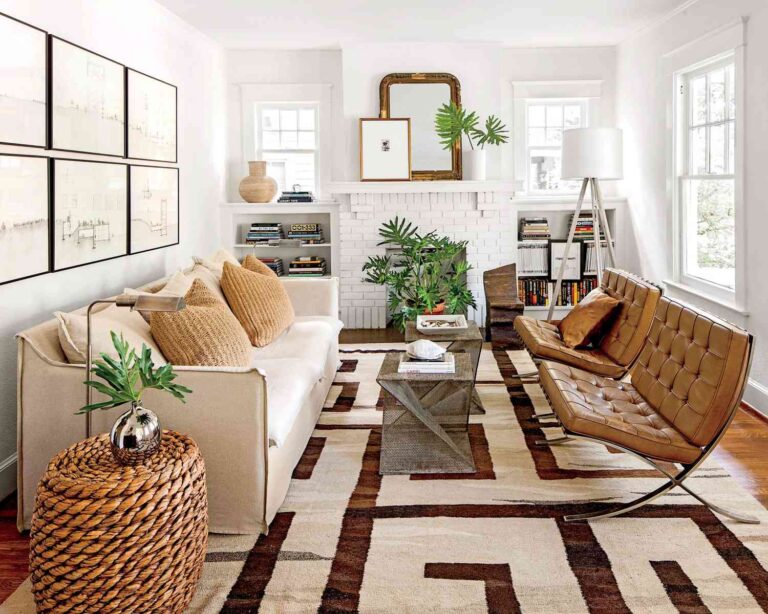We all know that a livable and functional home starts with keeping it clutter-free. But if your cupboards and closets are perfectly organized, but your home still feels messy, small design mistakes may be to blame. By tweaking a few things you hadn't considered before, you may end up with a calmer, more aesthetically pleasing and more organized home. Small accents like table decorations, art, and tech gadgets (and dreaded cables!) can all have a positive or negative impact on a room. So, to help you navigate the nuances and details of designing an organized home, we've compiled a list of dos and don'ts, as well as inspirational photos of especially beautiful and organized rooms.
Don't use too many accent pillows
Brian Woodcock, Styling: Paige Mullins
Accent pillows are great for adding color and pattern to a room's design, but using too many pillows can make it look cluttered and untidy. Keep accent pillows to a minimum and adopt the principle of quality over quantity when choosing pillows to add to your home.
Make the most of natural light
Too dim lighting can make your home look dark and even make rooms feel cramped and boring. Without proper lighting, our eyes have a hard time perceiving the size of a room, creating a rather uncomfortable atmosphere. Make sure you take advantage of the natural light that comes into your home, and if a room doesn't have much natural light, use furniture in light or neutral colours to keep it as bright as possible.
Do not use short curtains or drapes
Curtains and drapes can be used in the home for both aesthetic and practical purposes. If you hang your curtains on a curtain rail over your window and the curtains are too short, they will make the room look much smaller than it actually is, and give an overall awkward impression. Make sure you buy curtains that are the right length for the size of your walls. Most homes have standard dimensions, so you don't need to buy them custom made.
Don't pack too much stuff into your room
First, of course, think about the furniture, which is the largest object in the room. Two things to consider here are size and placement. Furniture that is too big for the room will overwhelm it. Make sure your furniture fits the size of the room and the other furniture in it. Second, try to float some of your furniture. Pushing all your furniture against the wall will disrupt the natural flow of the room.
Think about textiles
Next, consider your fabrics: poorly fitting slipcovers are sure to create a messy look. Fold and stretch blankets neatly. And finally, fluff your cushions with care. Check out design and style expert Phoebe Howard's guide to sofa cushion placement.
Don't miss the entry
This is the first space guests see, so it needs to be inviting, functional, and representative of a family home. One of our favorite tips is that my mother always had a red Oriental rug in the entry hall so that Virginia's dark red clay soil wouldn't get under our feet,” says Bunny Williams. “She would say, 'Look at the color of the soil and put down a rug with that background.'”
Television and other technology
Tech cables, cords and plugs are the bane of modern life. We can’t live without them, and of course we can’t live without them. But can Hide it. Tuck your TV away in a cupboard or put a gallery wall around it to keep it from feeling like a black hole in your space.
Don’t skimp on the size of your rug
A properly sized rug can give a room a sophisticated feel and make it feel larger than it actually is. Smaller rug sizes are much cheaper, but splurging on an 8×10, 9×12, or the largest size that will fit your space will save you money in the long run. A properly sized rug, combined with thoughtful furniture placement, will create a neat and organized look in a room.
Choose your wall decor wisely
A gallery wall is a clever way to add color and interest to any room in your home. The trick to making it work? Get out your tape measure and arrange it in a neat layout. Hanging art and photos haphazardly can make your collection feel chaotic rather than inspiring.
Don’t use too much color
A home filled with happy hues is always loved, but too much of a good thing is bad. When considering paint colors and fabrics, choose color and pattern combinations that complement each other, rather than colors and patterns that draw attention.


